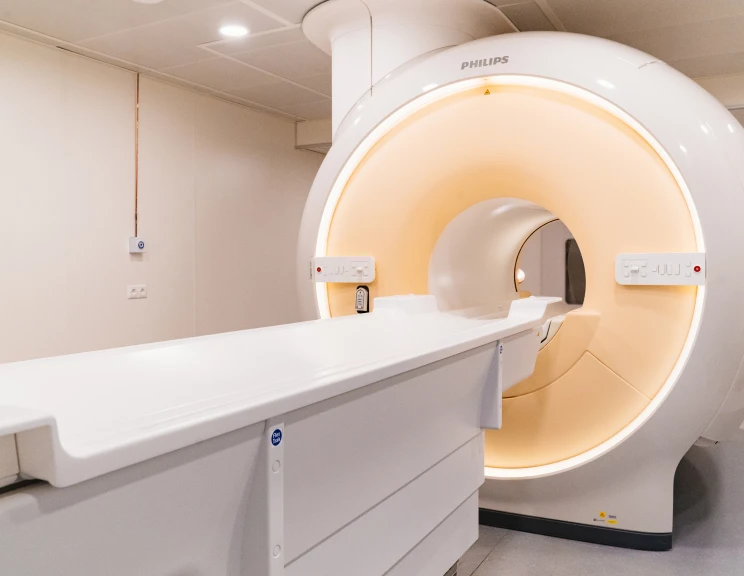
One of the fundamental questions that the global wave of digitization seeks to answer is how to automate, simplify and optimize the use of data. In order to enhance operational performance and create added values in the process, every industry strives to control and harness data – and healthcare is no exception. Healthcare institutions realize that the most valuable asset in this digital era is none other than the massive piles of historical and transactional data that they have been storing & collecting. What is left to do is integrating and connecting these pieces of data and making something informative out of them.
According to the “Harnessing the power of data in Health” report from Stanford Medicine in 2017, systematic data management will continue to benefit the healthcare industry in more than one way. First and foremost, physicians have been able to develop better patient profiles. By combing a patient’s electronic medical record with data from medical wearable devices and consumer-level testing, a holistic image of that patient can be developed, providing doctors with a good foundation for continuous treatments. Digitizing patients’ medical records also improve information availability & accessibility while increasing the likelihood of data being archived.
(Read more: Wearable Tech as the New Tool in Proactively Monitoring Public Health)
What's more, as the number of accurate patient profiles builds up, doctors will also be able to apply predictive analytics to preventive care and take a much more pro-active approach in detecting, anticipating, diagnosing and treating diseases. Such data also serve as invaluable inputs for medical & pharmaceutical research, speeding the process of ground-breaking findings and ultimately improving the overall public health. From the operational standpoint, monitoring & managing data related to patient visits can potentially improve patient experiences with healthcare providers by pinpointing & resolving inefficiencies in registering, testing, imaging, and information accessing.
While data has been bringing about essential transformations in healthcare, it does not come without challenges. The influx of electronic healthcare records puts a tremendous strain on healthcare providers to manage data in ways that must ensure integrity, interoperability, and security while complying with corresponding policies & regulations.
- Data quality
Data can be considered as the fuel that powers the operations of any information system; therefore, ensuring data integrity also means ensuring the system’s functionality and effectiveness. This cannot be more accurate in the healthcare industry where the availability of quality data dictates the quality of treatment that the patients receive. Dirty data – characterized by the incompleteness, invalidity, inaccuracy, duplication, non-standardization and meaningless of data - can lead to medical mistakes that directly threaten patients’ well-being and safety, damaging healthcare providers’ reputation and leading to costly lawsuits. Additionally, low-quality data can make tremendous impacts on daily operations including inefficient internal and external communication, erroneous payments and delayed treatments. Faulty data also has the potential of inhibiting medical research & development activities by providing misleading information, resulting in incorrect discoveries – a true “garbage in – garbage out” situation.
- Data interoperability
In order for data to be most useful to any industry, it needs to yield consistent meaning and should be shared and transferred amongst people, organizations, and systems – this is called interoperability (Kelsey, 2018). Data interoperability has a significant meaning in healthcare as it consolidates patients’ data from a range of electronic healthcare systems, enable patients to have complete control over what records can be shared to whom, and at the same time facilitating “research and innovation. However, as one of the persistent challenges of the healthcare industry, data interoperability is not only a technical issue e.g. data consistency among different systems and organization, it also requires an integrated structure of processes, as well as parties’ willingness to share information.
- Data security
In the age where private information is digitized and moved across the boundaries of organizations, systems, and even borders, the healthcare industry is faced up with the big question of data security & patient privacy. According to Verizon’s 2018 Data Breach Investigations Report, security breaches from healthcare sector takes up roughly 28% of all confirmed breaches, with the majority of the breaches resulting from human errors. Additionally, the industry also needs to deal with heaps of bad conducts. In 2018, it was reported that Australia’s doctor appointment system – HealthEngine had intentionally disclosed personal identifiable information of around 200 patients per month between March and August, 2017 to partnering law firms which were looking for clients in personal injuries claims.
- Policy Settings
Understanding the security risks related to patient data in the digital age, many countries in the world, has equipped itself with stringent legislation to control the usage of medical data. However, it is this restrictive and complex regulatory environment that has been preventing countries from realizing the full potentials of big data in healthcare. Take Australia for example, while existing regulations are put in place to protect patients' best interests and keep their personal data secured (National Health Act 1953, Privacy Guidelines for the Medicare Benefits and Pharmaceutical Benefits Programs, My Health Records Act 2012), they effectively limit the linkage of data, leading to the inaccessibility and under-usage of Australian public health dataset, particularly for research purposes.
As technological innovations are happening at a remarkable pace, healthcare providers will undoubtedly adopt the best technology use cases in their operations to improve efficiency and provide better services to patients. Under such scenarios, the government’s restriction on data usage will very likely cause major compliance issues and hamper the very process of improving healthcare. Policymakers, therefore, need to find the equilibrium between the need of securing data and making data accessible and exploitable in order to create an accommodating policy setting that both facilitates innovations & knowledge-sharing and ensures data privacy.
Data management in healthcare requires a strategic approach whereby the three aspects of data quality, security and interoperability should be properly addressed. If you have doubt about your data strategy, contact our team at FPT to help you review and design the most optimized structure. It is also imperative to understand the role of governments’ support via an encouraging yet comprehensive legislation infrastructure, which enables the industry to utilize and manage data in ways that will yield most values to patients.
For more information about FPT solution to problems in Healthcare section, visit:
https://blog.fpt-software.com/conversational-analytics-a-solution-for-chatbot-in-healthcare
Interested in Digital Healthcare? Explore more!






























